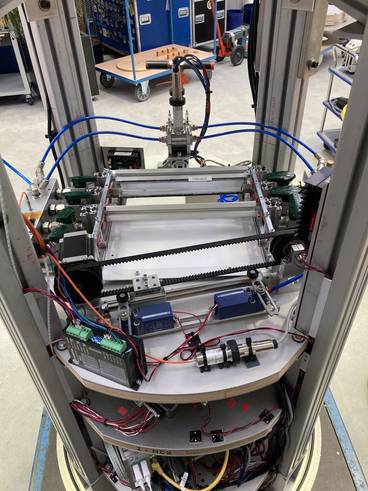Microgravity Capillary Oscillating Flow Experiment (µCOFfEe)

research area: fluid dynamics
experiment title:
Microgravity Capillary Oscillating Flow Experiment
experiment acronym: µCOFfEe
funding agency: ESA
grant number: CORA - Program
performing organization:
Faculty of Mechanical and Power Engineering, Wrocław University of Science and Technology, Poland /
School of Computing, Engineering and Mathematics, University of Brighton, UK
prime investigator:
Prof. Sławomir Paweł Pietrowicz /
Prof. Marco Marengo
experiment objective
abstract
Development and reliance on electronics in space technology trigger a critical problem of heat dissipation. A novel concept of a passive device called Pulsating Heat Pipe (PHP) was proposed in order to meet the heat dissipation requirements. Studies of PHPs in microgravity environment have already been conducted and showed potential applicability in space applications, however, a clear procedure to predict PHP 0g performance based on the geometry of capillary channel/tube does not yet exist. In particular, the path to understanding capillary phenomena involves formulating novel flow maps and dimensional criteria. Noteworthy, μCOFfEe aims at better understanding the dynamic capillary phenomena and flow pattern transitions under microgravity conditions, which has a broader impact for all the applications concerning two-phase capillary flow, not only for the PHPs. Mangini et al. presented the problem of defining a critical capillary diameter which influences the PHP thermal performance. Specifically, the two following hypotheses on the flow physics will be tested by μCOFfEe: 1) is the increase of fluid velocity inside the capillary channel influencing the value of the critical capillary diameter? and 2) is the fluid acceleration inside the capillary channel influencing the value of the critical capillary diameter? The proposed experiment is carried out in adiabatic conditions to be easily adapted to the short-term microgravity duration of the drop tower, removing any thermal inertia, but it will still deliver the necessary information on the critical diameter of the channel varying the slug/plug velocities and accelerations. The experimental set-up allows testing: i) the velocity of fluid inside the channel with various accelerations, ii) different channel diameters, and iii) different working fluids. The fluid flow characteristics will be investigated by means of a high-speed grey-scale camera and pressure transducers. Drop tower microgravity conditions will provide experimental data essential in extrapolating flow maps of capillary channels, following the first attempt made by Pietrasanta et. al. The proposed experimental campaign will contribute significantly to the improvement of the design process of two-phase devices based on capillary flows for space applications. Finally, the goal of the campaign is consistent with ESA’s SciSpacE Research Programme, which aims to address specific objectives by 2024, e.g. liquid-vapour-interface dynamics.
experiment campaigns
experiment year: 2020
number of catapult launches: 24


 "
"